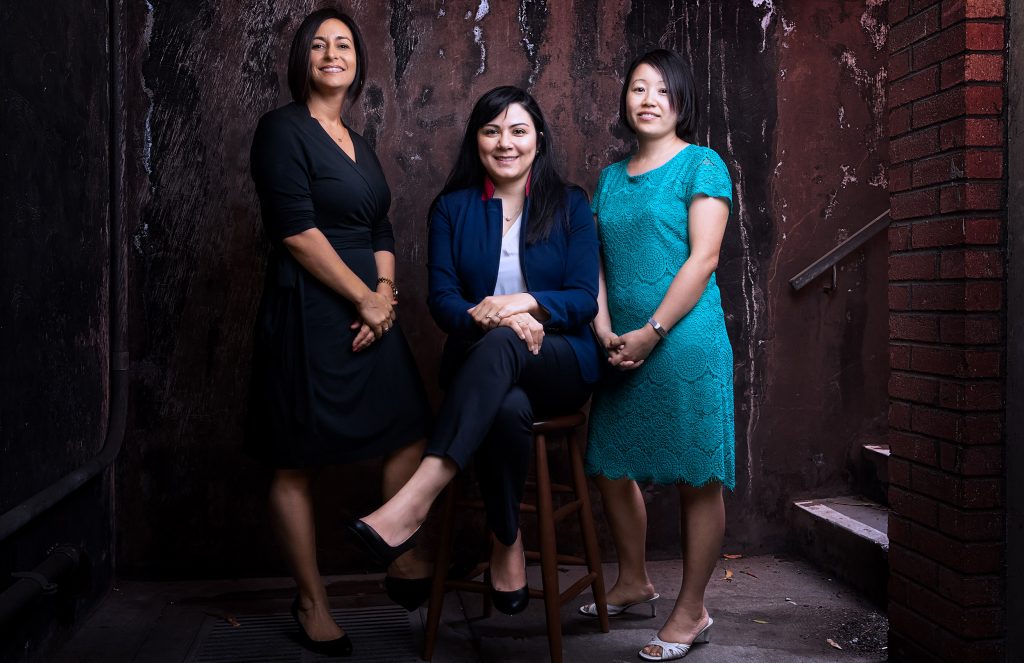Computing Solutions for Homelessness
It’s a sight seen nearly every day – college-aged men and women studying under blankets at the park and sleeping in their cars after dark. Homelessness is prevalent in Long Beach, California, and, therefore, it’s a problem that is difficult to miss and harder to ignore in a city of nearly 470,000.
Last January, volunteers counted nearly 1,900 individuals in Long Beach experiencing homelessness. The problem is endemic throughout Los Angeles County as well where nearly 59,000 persons are experiencing homelessness.
“It seems like this is an extraordinary and pressing need, not just in the community of Long Beach, but everywhere,” said Dr. Monica Lounsbery, dean of Health and Human Services. “Most of our focus has been around the alarming number of people who are having increased risk of housing insecurity and food insecurity. The challenge and focus have been to address and provide services to solve that problem.”
Under Lounsbery’s leadership, this challenge is being met head on by a newly formed interdisciplinary team of collaborators, who are tasked with developing a computer simulation model to help city policymakers forecast likely outcomes of potential policies and approaches designed to alleviate homelessness.
The collaboration consists of three professors with significant research and analysis experience in different areas of concentration.

Dr. Sara Nourazari, assistant professor in Health Care Administration, is an expert in Systems Engineering and Data Analytics. She plans to utilize system dynamics, a powerful methodology for policy analysis and system design, to obtain a deeper understanding of the structural elements of the complex issues of homelessness.
Drs. Kristina Lovato and Suzie S. Weng are assistant professors in the School of Social Work. Lovato previously worked as a social worker for San Francisco’s Human Services Agency as a bilingual mental health therapist. Weng studies how culture affects interactions between social service providers and people seeking help. They agree that the issue of homelessness is very important to social work and are glad to provide that perspective to this project.
The goal, according to the researchers, is to collect enough data within the community of Long Beach to develop a computer simulation model that behaves similarly to the actual system. The model will take into account several variables, such as housing supply and mental health services, along with societal issues, such as physical activity and education levels, among others.
For example, if a person isn’t physically active, it could result in poor health and, therefore, the chances for full-time employment and health insurance coverage diminish. And if that person then sufa catastrophic health crisis, it could deplete their savings or safety net and land them on the streets. This can then lead to more significant health deterioration, which increases the risks of longer unemployment and, subsequently, higher chances of housing insecurities and chronic homelessness.
“That’s how system dynamics can help us understand that there are opportunities for us to consider that are distal from the challenge of housing insecurity, and where we can operate effectively to address those challenges that will pay dividends in reducing risk factors,” Lounsbery said.
By connecting these types of wide-ranging pieces, Cal State Long Beach researchers can provide different potential solutions and piece together a clearer picture of homelessness.
“Like a jigsaw puzzle, you start with the pieces that are recognizable to you, and you are able to put them together,” Lounsbery said. “Then you realize there are some things out there that are really related to that, and at some point, you start building those things independently.
“Then somewhere in the jigsaw puzzle you’re able to join them. I see that possibility in this process of studying homelessness.”
Nourazari said, “system dynamics uses computer simulation modeling to frame and replicate a complex problem. By simulating the actual system, its interconnected sub-systems, feedback loops and causalities, we can provide an assessment of the current state of a system as well as an understanding of the behavior it can produce.”
“This predictive element will allow the community stakeholders to learn about consequences of new policy implications and set justifiable goals for future courses of action,” she added.
Nourazari thinks this approach will help them understand how the different elements in a system interact with one another. They will be able to look into how a chance in one variable can affect other variables over time, which in turn influences the original variable, and so on.
“Feedback loops are used in system dynamics to demonstrate these interactions,” Nourazi said. “Instead of studying a change in isolation, this method allows us to develop a holistic view of the problem and understand the nonlinear behavior of a complex system over time.”
Lovato and Weng added that this method also “compliments social workers’ holistic approach to serving individuals and families experiencing homelessness.”
System dynamics was founded in the 1950s by the late Jay W. Forrester, a technologist and faculty member at Sloan School of Management at Massachusetts Institute of Technology. He reportedly realized, using this methodology, that the internal management policies and structure of an appliance factory were responsible, not market forces, for the “boom and bust cycle” of layoffs and hiring at the plant. And that was the beginning of system dynamics.
As part of the project, the researchers intend to recruit Cal State Long Beach undergraduates. These students are enrolled in the on-campus research program, BUILD, which stands for Building Infrastructure Leading to Diversity. BUILD is a $24 million National Institutes of Health grant-funded program that trains undergraduate students for research careers in the health sciences.
The team currently is collecting data related to Long Beach’s homeless population. Although the work is specific to Long Beach, Lounsbery anticipates the researchers’ system dynamics model can be reproduced eventually in other communities facing similar issues.
“I think it could be really important, because it’s my view that I don’t think we have anything like this,” Lounsbery said. “Just having the system laid out could be very helpful.”